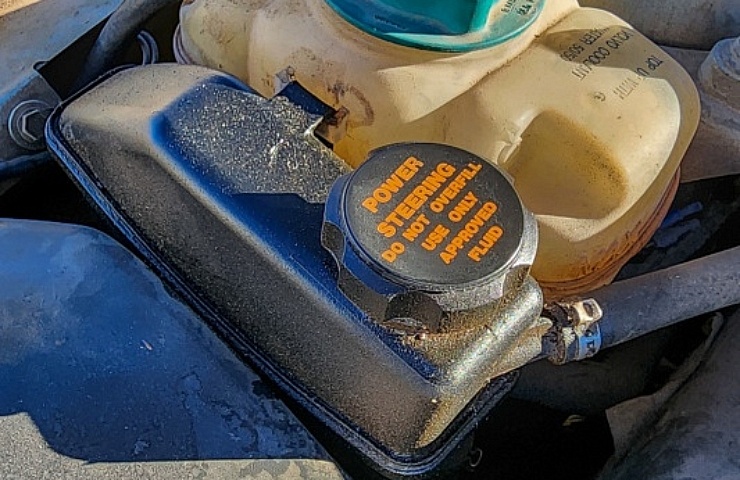Contents
When steering gets heavy, and you hear a groan from the power steering pump under the hood, the power steering system needs immediate attention. Most of the time, these problems are related to the power steering fluid.
Read: What Is Your Steering Wheel Telling You?
When to Change Power Steering Fluid
Most cars on the road have the same fluid in the reservoir as when they left the factory. But power steering fluid needs to be changed regularly. Some manufacturers have specific change intervals, but you can bank on 50,000 miles as a reasonable interval for most vehicles.
Like other fluids, power steering fluid gets dirty and loses viscosity over time. Wear from the pump and rack leads to metal shavings in the fluid. Many power steering systems don’t have filters, so you run all that metal through the system repeatedly. Since power steering systems run pressures as high as 2,000 psi, the cleaner the fluid, the better.
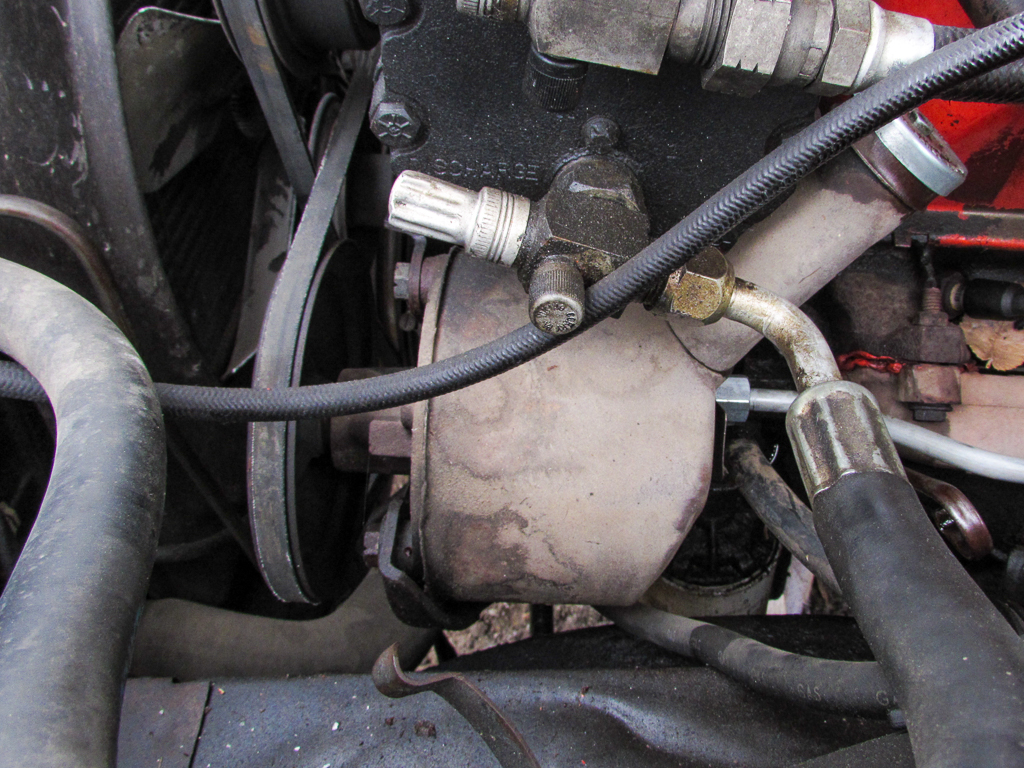
The power steering pump is often located at the front or drive belt side of the engine. This pump has a built-in reservoir.
There are a few telltale signs the fluid needs to be changed. These include groaning or squealing from the pump, heavier than usual steering feel, and foamy fluid in the reservoir.
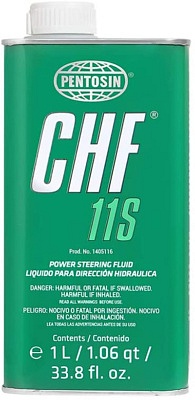
Green CHF power steering fluid.
There are two kinds of hydraulic fluid. Most power steering fluids are red; these are ATF-based fluids. CHF fluids are green. Color helps you determine if the fluid needs to be changed.
- The fluid should be clear on the dipstick or your finger, regardless of color. It should not be brown, black, or hard to see through.
- Standard red fluid should be a light maroon at the darkest.
- CHF fluids are mint green and should not be darker than jade.
Your fluid should also smell good. It should smell like oil with a sweet note. Once it gets too hot or old, it takes on a burned marshmallow smell with sharp fishy notes that make you want to recoil. Smell is subjective, so you can always compare your fluid to a fresh bottle. If it has any amount of burned smell, it needs to be changed.
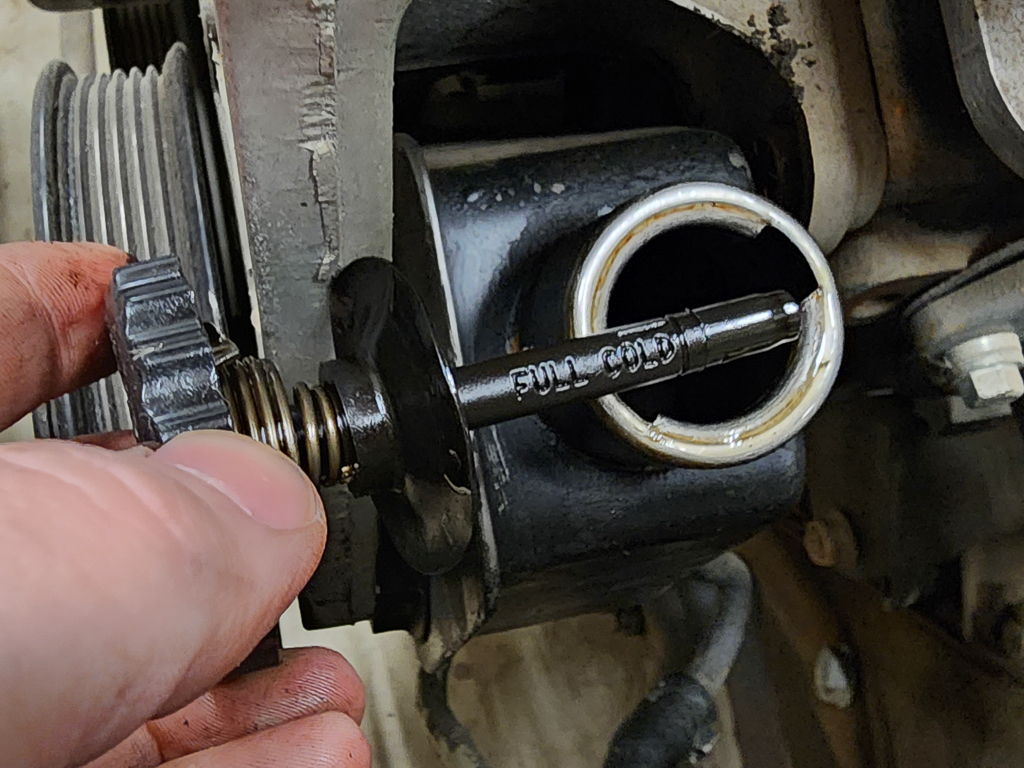
Remove the pump reservoir cap and use the dipstick to check power steering fluid level and condition.
Read: Regularly Check These 4 Car Fluids
Types of Power Steering Fluid
There are a lot of misconceptions about power steering fluid. Many believe that it’s the same as automatic transmission fluid, which is not entirely wrong, but it also isn’t quite correct.
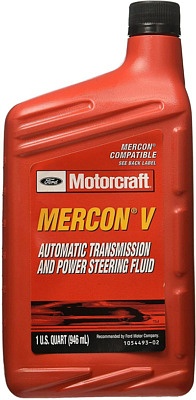
Mercon ATF power steering fluid.
They are the same essential hydraulic fluid, but various formulations use different detergents and additives for different operating temps and functions. It depends on the vehicle manufacturer; sometimes, using the wrong fluid can void your warranty.
The reservoir cap should list the fluid type you should use in your specific vehicle, either ATF or CHF. If you don’t see it there, check the owner’s manual. When CHF is specified, there is a reason for it: the seals in the system are not compatible with ATF. If you use ATF, the seals will swell and fail.
Shop now for power steering fluid
Power steering reservoir caps often list the required fluid type. Older vehicles like this Chevy El Camino are less particular.
Also, note that some cars built since 2004 have electric power steering. Check your vehicle’s specifications to determine if your system is electric or hydraulic.
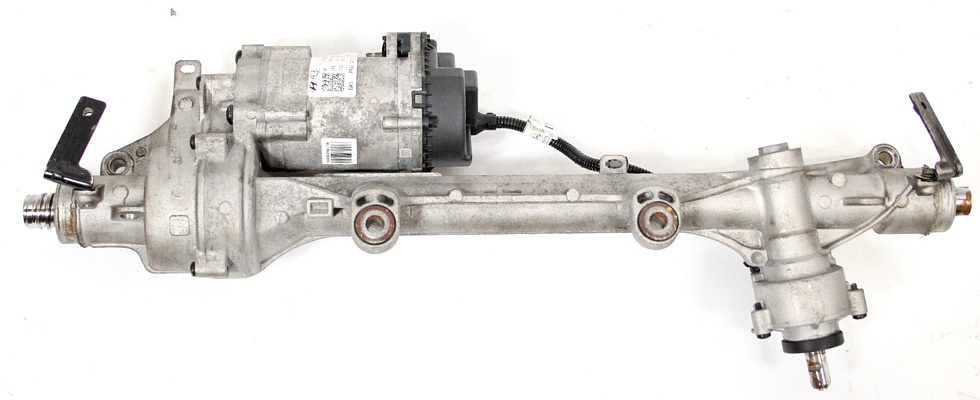
Electric steering systems use a powerful motor and gears (left) instead of pump and hydraulic fluid.
How to Change Power Steering Fluid
Every vehicle is different, but the basics of a power steering fluid change are the same. It is easier to access in some vehicles than in others, so check your owner’s or service manual for details.
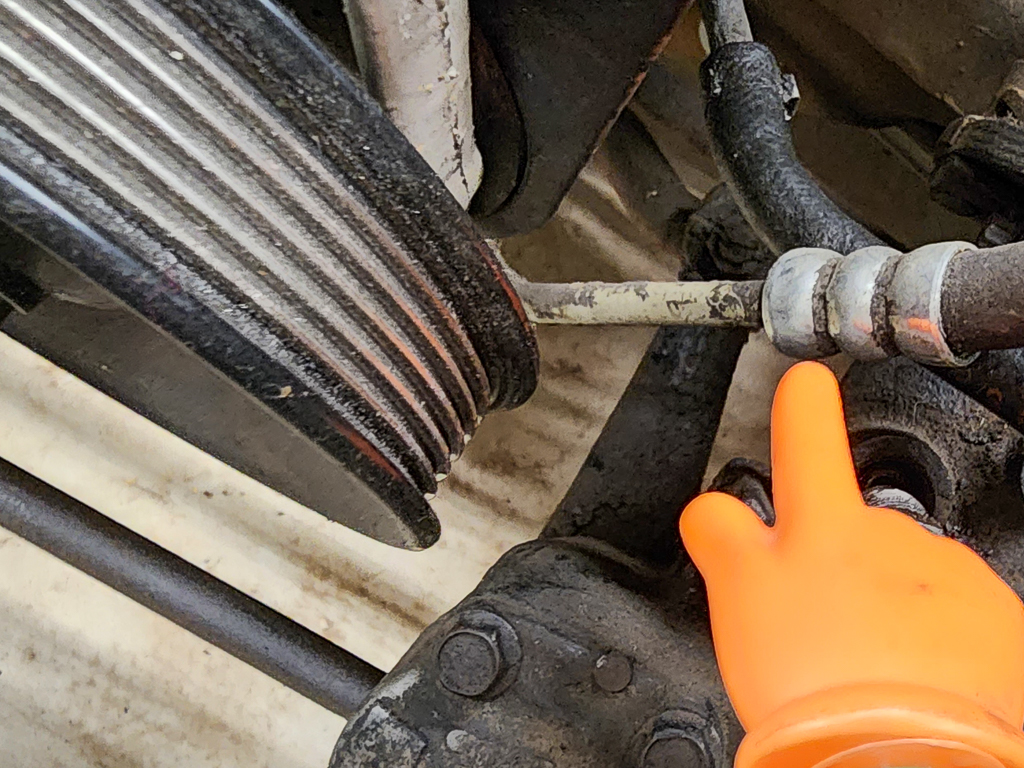
A hydraulic compression fitting differentiates the high-pressure fluid hose from the low-pressure return hose.
Safety first. This process involves working around the engine and pressurized fluids. Do not attempt this task with a hot engine. The engine should be off and not run for at least three hours to ensure the fluid is cool.
- Raise the vehicle with a floor jack to get the weight off the front suspension. Support the vehicle with jack stands. If you can’t raise the vehicle, place a trash bag under each front tire on a smooth concrete surface to make turning the steering wheel easier.
- Open the hood and locate the power steering fluid reservoir. Some engines have a separate reservoir, while others have a reservoir mounted to the pump itself.
- Access the return line to the reservoir. This is typically a small, low-pressure line that may have a hose clamp at the fitting.
- Disconnect the low-pressure return line and route it to a drain pan or bucket. Most power steering systems hold a couple of quarts of fluid.
At this point, you can either drain or flush the system. In either case, you’ll need to enlist a helper.
Drain the Old Power Steering Fluid
- Have a helper start the engine and turn the steering wheel lock to lock about 20 times. This will help purge the fluid from the system.
- While the helper is turning the wheel, monitor the reservoir level. Add fluid as needed to keep it from draining completely. This is a wasteful process.
- Shut off the engine.
- Reconnect the low-pressure line.

The low-pressure power steering return hose often uses a low tension spring or worm gear clamp. Remove to drain.
Flush the Power Steering System
- Fill the reservoir with flush fluid. You can use transmission flush treatment, but power steering flushes are available.
- If the reservoir is too full, you may need to drain some fluid to get a minimum of four ounces of flush in the reservoir.
- Have the helper start the engine and turn the wheel lock to lock 20 times to circulate the fluid.
- Shut off the engine.
- Disconnect the low-pressure fluid line and route it to the drain pan.
- Restart the engine and have the helper turn the wheel lock to lock 20 times to drain the system.
- Shut off the engine again.
- Reconnect the low-pressure line.
Now, you’re ready to refill the system.
Shop now for power steering system parts- Refill the reservoir with the correct fluid (ATF or CHF) for your vehicle.
- Have your helper start the engine and turn the steering wheel 20 times lock to lock.
- While the helper is turning the wheel, the fluid level will drop dramatically. Add fluid to maintain about a half-full level in the reservoir.
- Shut off the engine.
- Wait a couple of minutes for the reservoir level to settle. When the engine is off, the fluid level will rise a little. Top off the fluid to the full line (if provided) or to about one inch short of the top of the reservoir. Don’t fill the reservoir with the engine running, as it may overflow when you shut off the engine.
Your vehicle’s power steering system is now serviced and ready for the next 50,000 miles. You should flush your system any time you change a part, including hoses, pumps, or steering gear. This helps eliminate contaminants that can get into the system.

